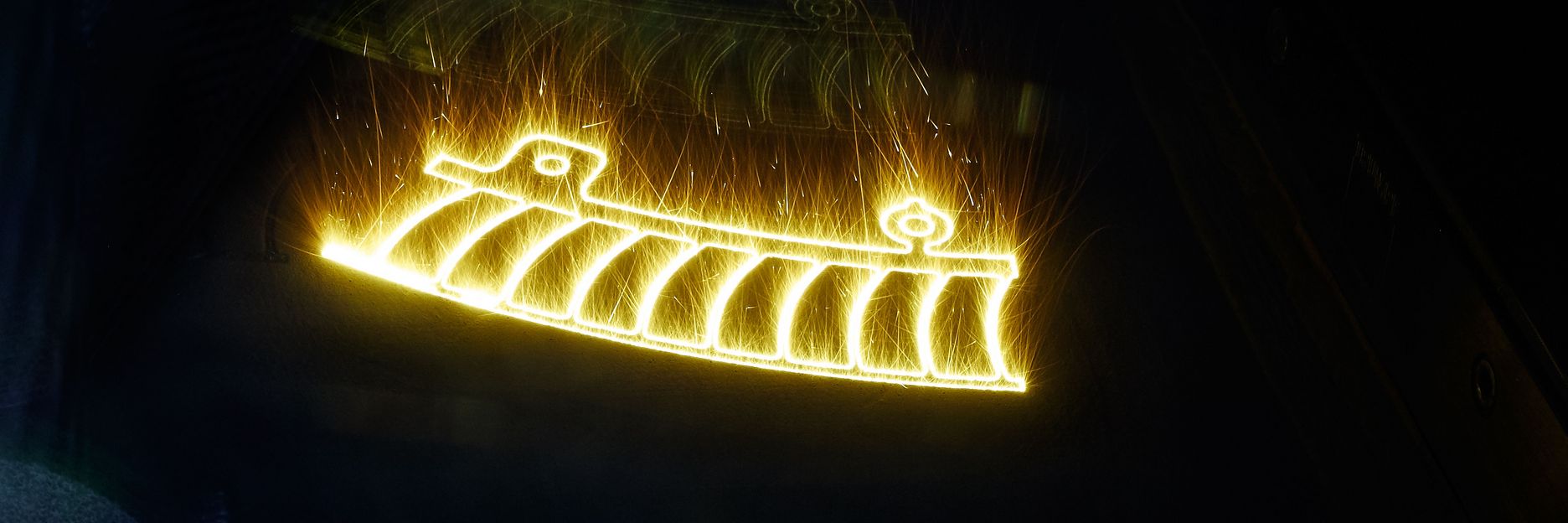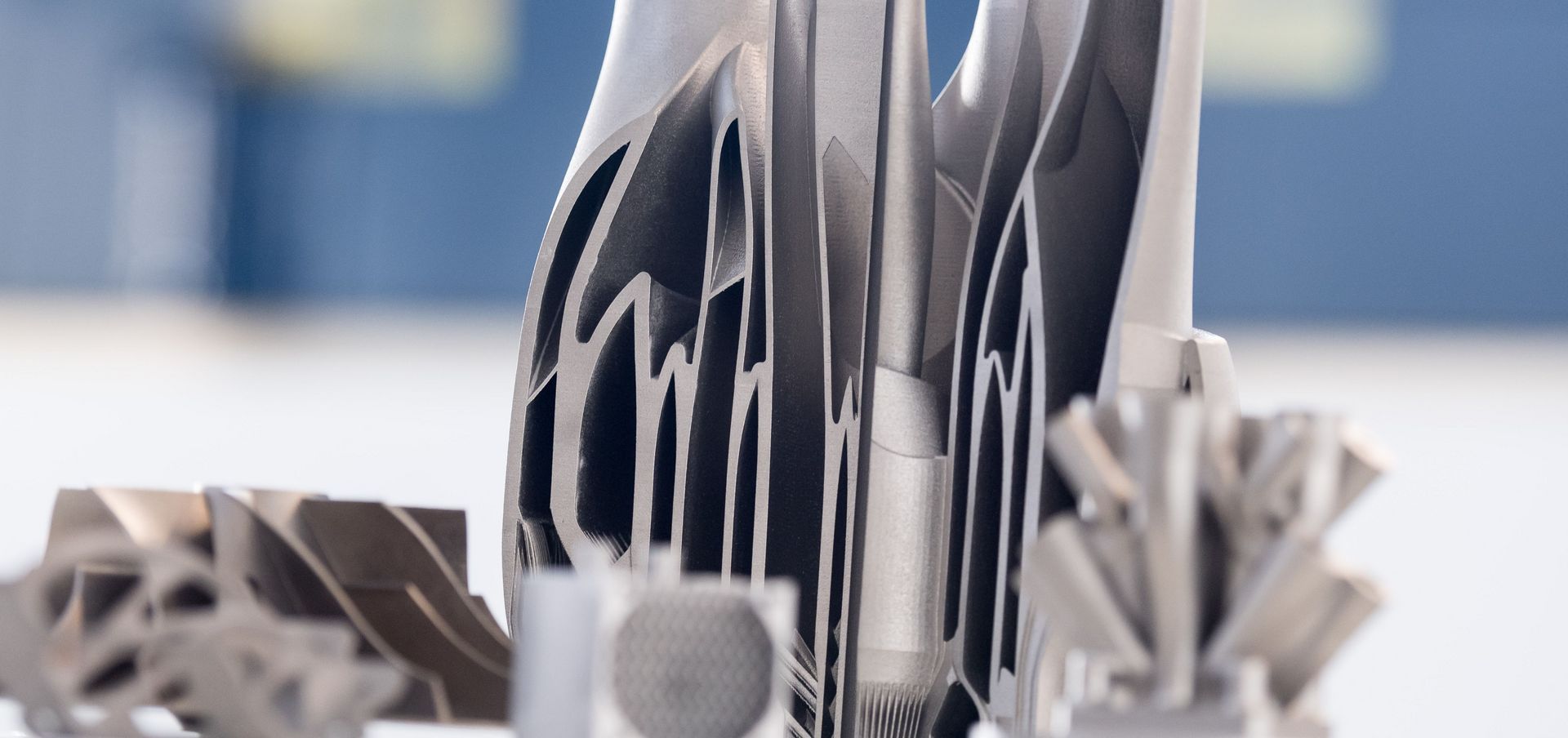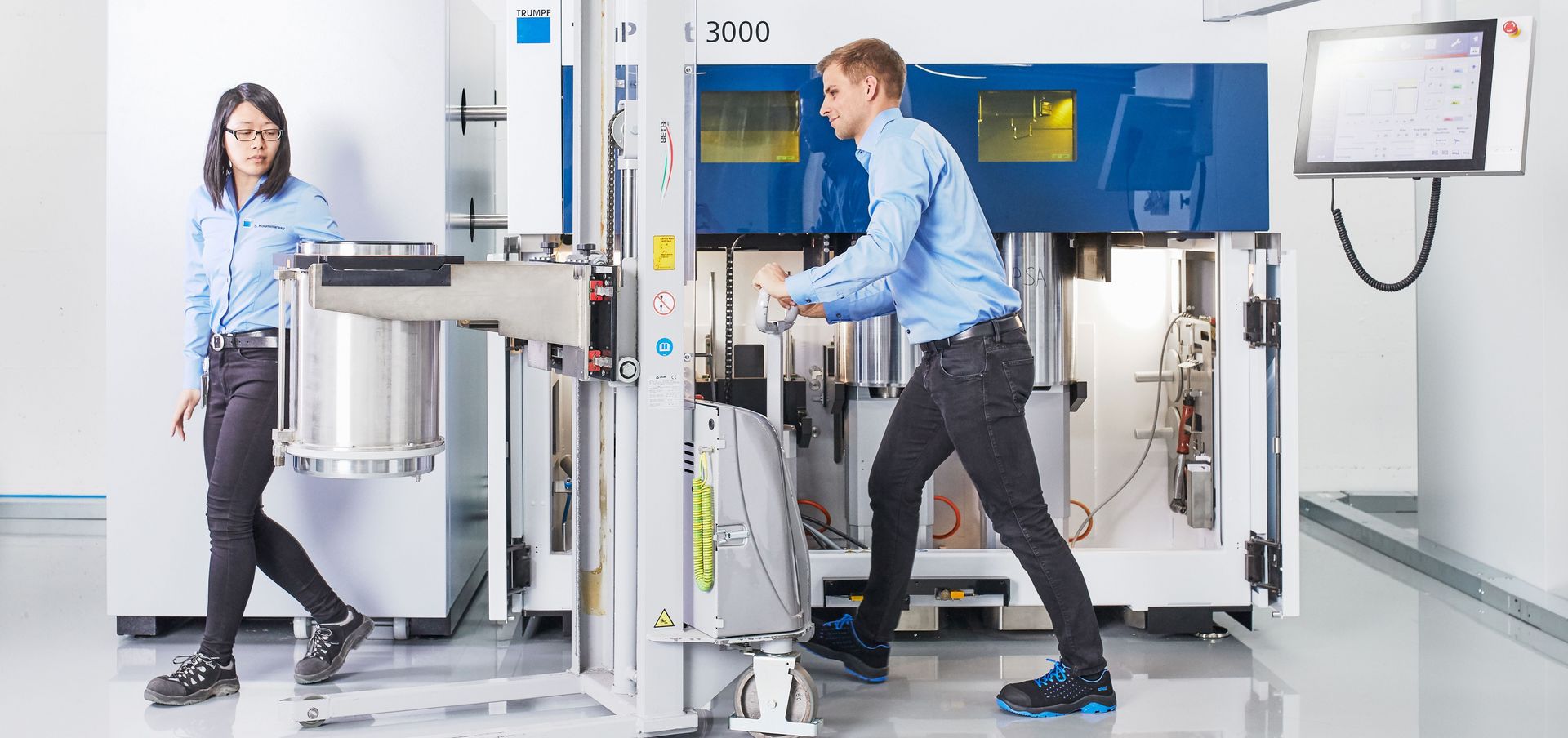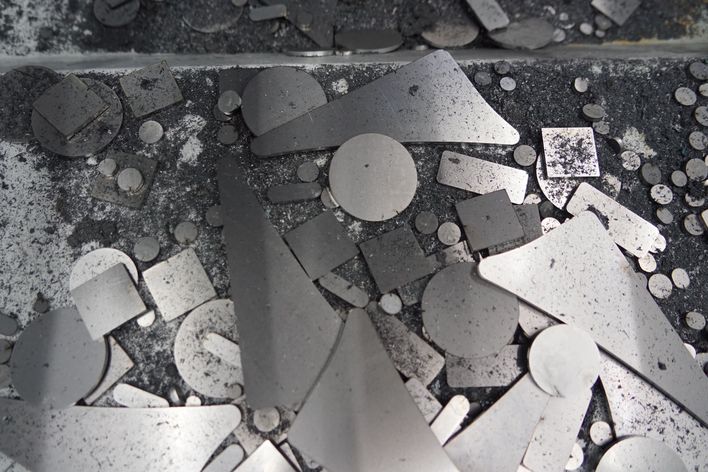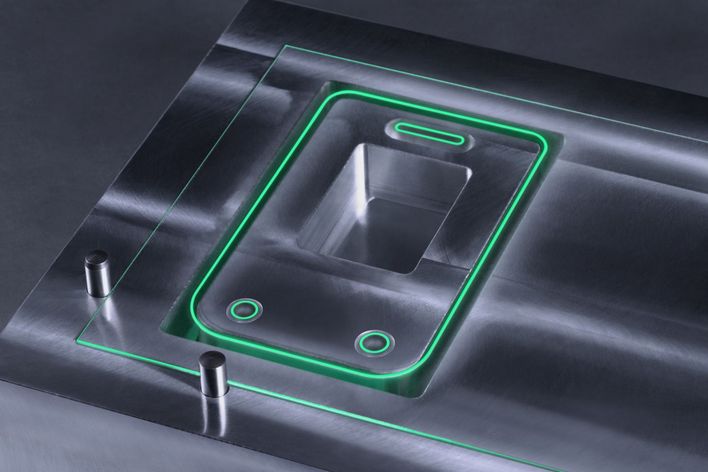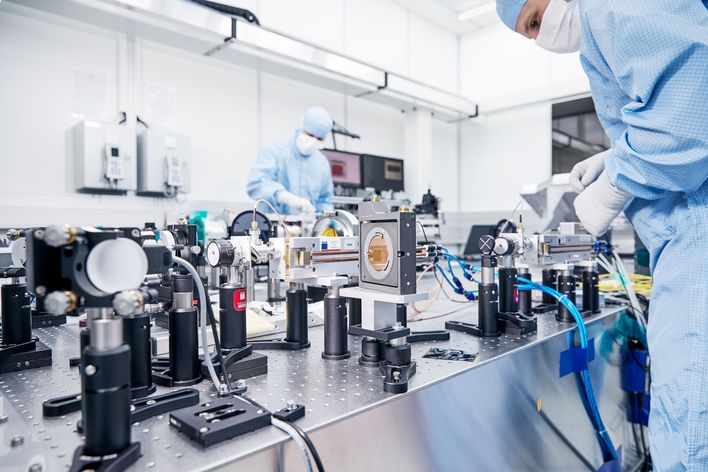Production lines without 3D Printers will be an anachronism in the connected factories of the future
In fact, the manufacturing industry as a whole is desperate to find a way of offering flexible, on-demand production of metal parts. Right now, it is on the verge of transitioning from the mass production of mass-produced parts to the mass production of individualized parts – but conventional manufacturing methods are reaching their economic and technological limits. Over the past 15 years, TRUMPF has developed two laser processes to an industrial scale, both of which can be used to “print” entire components, seemingly from nothing.
Loaded with metal powder, the machine waits for the command to produce. The laser inside is ready to zip across the work surface at intervals of just a few fractions of a second, creating solid parts from the fine-grained metal powder. The machine and its laser can build any part on command, whether it’s the size of a needle, a fist or a crate. They can handle any shape or contour, from injection nozzles and turbine blades to dental crowns, tools and medical implants. And – perhaps most remarkably of all – they can produce just about any geometry, offering a level of design freedom that is only limited by the developers’ and engineers’ imaginations.
The machine is a 3D printer for metal parts, though the term “3D printer” is really just a colloquial term for a technology that experts refer to as generative or additive manufacturing, or AM. Few technologies have enjoyed as much hype and praise for their revolutionary nature as this one, and the principle behind it is certainly a tantalizing prospect: 3D printers can build up any object layer by layer using data input directly from a CAD program. In industrial settings, this is generally carried out using metal powder and with the power of the laser.
The laser fuses metal powder from the nozzle and in the powder bed
Essentially, AM uses a laser to fuse metal powder particles into layers of material in a powder bed. This process is known as laser metal fusion. It is particularly suitable for geometrically complex parts with internal channels and cavities – the kind of parts that conventional methods such as turning and grinding struggle to produce efficiently, or are unable to produce at all. These include nozzles with optimized flow geometry and spinal implants with a fine lattice structure.
But not every part is chosen for its complex geometries. In many cases, additive manufacturing provides an economical means of adding material to existing parts, for example adding a mounting surface to a pipe. The conventional way of creating the required geometry in this case is to produce a pipe with a larger diameter than necessary and then ablate everything apart from the mounting surface itself – a tremendous waste in just about every respect. But a technique known as laser metal deposition or laser cladding makes it possible to turn the whole process on its head by adding just the necessary material rather than ablating all the unnecessary material. To do this, the laser generates a weld pool on the surface of the pipe and fuses the powder into the desired shape as it is added to the pool.
Laser metal fusion and laser metal deposition are the two laser-based methods that are making additive manufacturing more attractive and relevant for industrial use – not before time, because this boost in flexibility is exactly what industry is looking for. The unstoppable trend towards high mix, small batch manufacturing is proving to be a real headache for production planners, with the cost of tool manufacturing and set-up times spiraling to astronomical levels. Making any kind of profit at all from the mass production of individualized parts and one-off products is virtually impossible with mechanical methods – and lightweight design is making the situation even harder. Automakers are optimizing every inch of their vehicles to cut down on weight, and the aviation industry is busy doing the same. Laser metal fusion allows parts to be designed on the basis of bionic principles, paving the way for the ultimate in lightweight construction. Weight savings of over 50 percent are perfectly realistic – and the most remarkable thing of all is that the mechanical properties of the parts actually improve when engineers develop them on the basis of 3D design principles.
Pioneering work, one wrong step, and a return to the market
Back in the mid-1990s, TRUMPF and Fraunhofer ILT joined forces to work on the development of laser metal fusion. This collaboration gave rise to TRUMPF’s first powder bed-based machine, the TrumaForm. The machine was launched in 2003, well ahead of the curve. Back then, the market was still dominated by research, development and a few niche applications – but it certainly wasn’t mature enough to embrace industrial-scale 3D printing. Three years after bringing the machine to market, TRUMPF put its plans for developing the powder bed process on ice.
Laser metal deposition has followed a very different path. TRUMPF has been working on this technology continuously for almost 15 years, steadily refining it and establishing a solid market presence. For a long time, this method was primarily used to coat parts, for example to protect them against wear or corrosion. The machines were also used to repair damaged metal components. Now, however, laser metal deposition has become so advanced that it can be used to generate entire parts in a similar way to laser metal fusion.
Sometimes markets grow exponentially – but other times things move in an unexpected direction. Looking back, TRUMPF’s decision to shelve its work on powder bed additive manufacturing was the wrong one. Market demand for robust, industry-ready machines has rocketed in recent years, and laser metal fusion is once again back in business. TRUMPF responded to this development by rolling up its sleeves once again and analyzing the market. During the last fiscal year, TRUMPF reinstated additive manufacturing as one of its key areas of strategic action. Thanks to its previous pioneering work in this area, TRUMPF was able to quickly regain a technological edge. In 2015, it brought new machines to the market, this time under the name of TruPrint instead of TrumaForm. Some 200 people are now employed in this business division in Ditzingen, all of them committed to the ambitious but realistic goal of generating sales of some half a billion euros by 2030.
3D printing – the holy grail?
So surely additive manufacturing will eventually supersede all the other manufacturing and production methods we use today? Well, not quite. Laser metal fusion and laser metal deposition are not disruptive technologies. It is far more likely that they will simply find their rightful place alongside well-established techniques such as turning, milling and pressing. For some parts, they may end up being used in combination with these techniques in a manufacturing chain, or perhaps even in an integrated machine. In a few years’ time, the vast majority of modern factories will have a 3D printer at their disposal.
Anything else would be counter-intuitive in the light of digitalization and Industry 4.0. That’s because digitalization is crying out for a tool that is fast, direct, flexible and physically unconstrained – and the laser fits that description perfectly. Lasers can only be controlled numerically; in fact you could almost say that data-based manufacturing is in their DNA. Additive manufacturing helps to maximize the potential, leaving nothing but a focused beam of light between data and form. When it comes to modern data-driven production, additive manufacturing is the perfect technology because it is the pure embodiment of data-based manufacturing.
Finally, back at the machine, the commands have been received and the laser has started work. With the machine in full swing, sparks fly and the first contours begin to emerge. A part takes shape where, previously, there was nothing but powder – and that’s the stuff that engineers’ dreams are made of.

